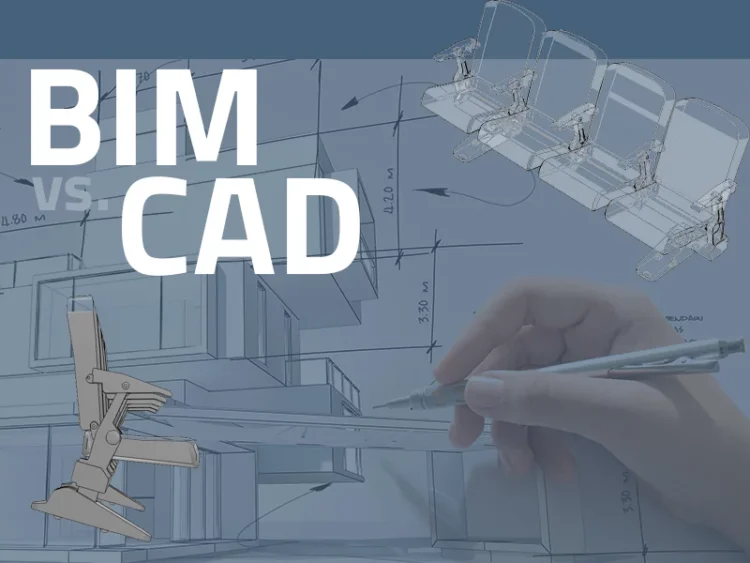BIM can be an incredibly useful tool that encourages role integration and bridges adversarial relationships between players. Unfortunately, this paradigm shift comes with some risks that could compromise its efficacy.
Schedulers can save themselves hours each week by assigning tasks directly to location teams using BIM tools, instead of sitting through meetings to update everyone on progress.
Page Contents
BIM vs CAD: The two tool for construction companies

Source: youtube.com
When comparing construction software many professionals ask which is better: BIM vs CAD? CAD is a software tool useful in the design and construction of toys and some equipment, however, in some cases, it can also be used for 3D modeling and floor planning.
On the other hand, BIM, for example XYZ BIM by XYZ Reality, is specifically designed for the design and construction of buildings reaching beyond the capabilities of design software and enabling collaboration through its design features. We will explore more on this in the section below.
Improved Collaboration
BIM can help build stronger collaboration among different stakeholders of a construction project by providing all parties involved with an accurate digital representation of the physical building, which allows all to make necessary modifications and detect issues prior to them occurring in the field – thus decreasing rework needed and speeding up construction.
BIM can enhance internal communication on construction projects by helping participants coordinate instantly and creating one document repository. Furthermore, its use enables stakeholders to work more collaboratively by developing an understanding of both project goals and responsibilities faster.
Building information modeling software also leads to reduced project errors and productivity increases, and can substantially boost the return on investment for AEC (architecture, engineering and construction) firms of all sizes. Benefits may include reduced project costs, shorter life cycles, reduced reworks, centralizing information storage needs, and flexible design changes.
Increased Efficiency

Source: freepik.com
BIM allows all parties to collaborate virtually, eliminating time-consuming and expensive mistakes in an efficient manner. Furthermore, it can increase efficiency by decreasing meetings or inspections necessary for construction sites; and even saving money and resources by reducing paper usage or other non-sustainable materials used during building.
As part of its services, 4D planning software also facilitates visualization and 4D planning of construction processes with progress checks on an interactive graphical display. Furthermore, its model can help prepare a bill of materials, estimate costs, as well as create an activity schedule of completed activities.
BIM can significantly decrease rework during construction. Contractors using a BIM model can spot potential issues before they arise and fix them before any delays occur, saving both time and money in repairs later on.
Furthermore, this information allows contractors to make better decisions, stay within their budget constraints, meet project goals and deadlines more effectively and save both time and effort overall.
Real-Time Notifications
Team members collaborating in real-time on a BIM model can take advantage of real-time collaboration by seeing changes made by others and discussing any thoughts or suggestions instantly. This enables more efficient decision-making while increasing synergy within the team.
As well as improving communication, BIM platforms also help reduce miscommunication by making data easily available for everyone to check and understand.
Suppose an electrical engineer edits a layout that will intersect with sewer pipes or ventilation ducts. In that case, other teams can quickly detect this by using clash detection tools to identify potential conflicts during construction on site and avoid potential headaches.
Centralized information can also be invaluable for operations management after construction has been completed, including creating schedules, running simulations, and performing energy calculations. Furthermore, different stakeholders can access this data easily across various platforms – ultimately leading to increased efficiency in operations while creating a sustainable built environment.
Increased Productivity

Source: pinterest.com
BIM allows for a holistic view of any project, with each team working in real time on one model of it. This ensures better coordination, prevents costly errors on site, and reduces repair or reconstruction needs.
This also reduces the time each individual must devote to manually reviewing plans, so they can return quickly to their work and complete projects faster.
Additionally, this allows them to utilize automation tools that detect collisions between elements such as electrical cables, sewer pipes, or ventilation ducts.
Conclusion – Many teams can benefit from the use of BIM technology
Designers and builders can take advantage of BIM to reduce waste through accurate design and pre-assembly, as well as by minimizing errors on site, thus increasing productivity.
Contractors can also benefit from BIM by generating accurate material requirements estimates, saving both money and increasing productivity – this saves money while improving productivity! It may even help them avoid expensive design changes that would otherwise add extra costs over time.





